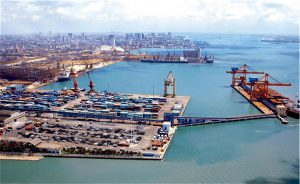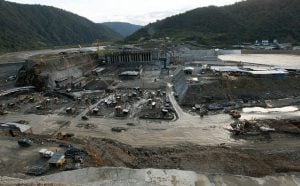China will help build new roads, railways, pipelines, and power plants as part of US$28 billion of deals signed this week that would expand Beijing’s influence on its western neighbour and enhance trade links as part of Xi Jinping’s "One Belt, One Road" initiative
On a state visit to Islamabad this week, the Chinese leader put his name to deals that could
help transform Pakistan’s energy supply as the country aims to modernise its economy, alleviate poverty and avoid crippling power cuts.
But the environmental impact of China's biggest overseas investment package to date – if it rises to a projected US$45 billion – would be huge.
Beijing could fund and help run 10 gigawatts (GW) of power projects in the country, most of which will burn coal.
Around US$34 billion of China’s investment of the projected $45 billion is likely to be spent on energy, as the country will try to build at least six new coal-fired power plants and fund the development of coal mining projects.
However, some of these investments were already on the drawing board and have been subject to repeated delays, prompting scepticism that the deals signed this week will fully bear fruit.
The two countries signed a similar string of energy deals
totalling 16GW during Pakistan Prime Minister Nawaz Sharif's state visit to China last year. But China later quietly
pulled out of a number of projects.
And some observers think the real reason why China is funding economically risky power projects is to get strategic access to Gwadar port, a gateway to the Persian Gulf and its rich supplies of oil and gas.
(For a separate chinadialogue piece on the geopolitical aspect,
click here)
Fears persist that glacier-fed rivers will dry up due to climate change, making hydropower economically unviable in the long-term.
But China has not been willing to invest in the larger 4,500-megawatt Diamer Bhasha dam on the Indus which lies in an area of Kashmir disputed by India. Pakistan’s struggles to fund large hydro have left the country with little option but to turn to more polluting coal plants.
The two governments also inked deals on 900MW of solar generation and 200MW of wind power, providing a boon to Chinese manufacturers of turbines and solar panels, and expanding the use of renewables in Pakistan.
Coal to exacerbate drought?
It is China’s investment in coal-fired power that will most
concern environmentalists, as thirsty new mines and power plants would be located in the Thar desert, which is dealing with
sustained drought and potential famine.
Pakistan has become increasingly reliant on energy investment from China to ease its chronic energy shortages that have crippled the economy because funding from elsewhere has dried up in recent years, particularly for coal-fired power projects.
Financing energy
As the central government in Beijing tries to cut the share of coal in its energy mix, it is encouraging the
exports of coal-fired technology to other Asian countries such as India, Indonesia, Mongolia, Thailand and Vietnam, a trend that would blunt the impact of China’s domestic cuts in greenhouse gases, say analysts.
China could argue, with some justification, that it is merely following the path paved by companies such as Japan's Hitachi, Germany's Siemens, France's Alstom and US conglomerates GE and Westinghouse, which have sold coal technology home and abroad for decades.
Pakistan's energy choices are also limited, with most major energy sources posing huge environmental and economic problems. Its ability to develop hydro projects – which can be massively disruptive to local populations, river systems and ecosystems – is complicated by territorial disputes with India.
Meanwhile gas, widely seen as the main alternative to coal, involves costly and politically risky pipelines and import terminals. Solar and wind would be intermittent supplies to a creaking grid.
If Pakistan uses Chinese know-how on ultrasupercritical coal power plants, greenhouse gas emissions would be a good deal less per unit of energy than oil-fired electricity.
But this would lock the country into coal use for decades to come at a time that scientists warn the world needs to find lower carbon alternatives to avoid runaway climate change.
Moreover, even the most efficient coal-fired power plants are still massively polluting to air, soil and water, say environmentalists.







